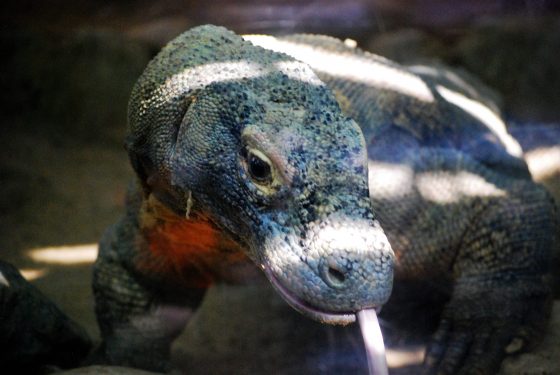
Author: William Barrick


Spring Symposium 2024 Video
Dr. Robert Cole presented the topic “The Biblical Theology of מין/’Created Kind’ in the Hebrew Bible” for our online CTS Spring Symposium 2024 on Thursday, March 21. Sixteen people logged on to participate in the symposium. For those who could not join us, the video for the symposium is available at the following link. In addition an unedited text of the Chat for the symposium is available in a TXT document.
We plan to offer another online symposium in the Fall. Please watch for announcements on our CTS website (Blog) as well as for our occasional MailChimp emails providing information about such events.

Spring Symposium 2024
Dr. Bob Cole (CTS board member) will present The Biblical Theology of מין/Created Kind in the Hebrew Bible as the topic in our CTS Spring Symposium 2024. Mark the date and time in your calendar: Thursday, March 21, 8:00 PM (EST).
The symposium will be conducted on ZOOM (link plus pass code 980922). You may invite interested friends by giving them the information directly or refer them to this blog post. Please do not publish this information on any other website or on social media.

JCTS Volume 2 Preview
JCTS‘s Executive Editor, Dr. Steve Boyd, has released an article as a preview to the Volume 2 (2023) issue. He has made it available as a free download from our website’s Journal page. Steve also plans to post a second preview article in the near future. These previews will allow our CTS members and website visitors a taste of what is in store for members and journal subscribers when Volume 2 finally comes off the press.
Meanwhile, all of the CTS Board extends their New Year’s greetings to all our readers. Happy New Year 2024!

Origins Conference 2023
Please register. For what? For the annual Origins Conference meeting at Cedarville University in Cedarville, OH, Saturday, July 15. Registration is available at this Eventbrite link. Please register so you can join either in person or via livestream (TBA).
As with previous Origins Conference meetings, papers will be presented by members of all three societies (Creation Biology Society, Creation Geology Society, and Creation Theology Society). An Interdisciplinary Session will be led by the Creation Theology Society on the topic of Created Kinds. The Interdisciplinary Session presentations will be published as papers in the third issue of the Journal of the Creation Theology Society (2024/2025).
Following the Saturday sessions, the Creation Theology Society will hold its Annual Members Business Meeting. Please be certain your CTS membership is up to date so you can vote.
From July 16–19 Cedarville University will also host the 9th International Conference on Creationism (follow the link for information).

Creation Days and Created Kinds
A recent discussion of the pros and cons for feathered dinosaurs noted that birds and dinosaurs were created on different days.[1] Birds were assigned to Day 5 (Gen 1:20), but the dinosaurs to Day 6 (“beasts of the earth” Gen 1:24 esv). Such a distinction ignores the fact that our modern, scientific taxonomic groups do not necessarily reflect the biblical descriptions given for the creatures made on each day.[2] For instance, if we consider what day reptiles were made, we immediately realize it is a complicated question because there are terrestrial, aquatic, and flying reptiles. The great number of aquatic reptiles could be included in “the great sea creatures[3] and every living creature that moves, with which the waters swarm” (Gen 1:21 esv). The following marine reptiles would be candidates for Day 5 creations: plesiosaurs, ichthyosaurs, and mosasaurs. These three groups include many species and may themselves consist of multiple created kinds.[4]
As can be seen, these two major groups of marine and flying creatures include many reptiles. That means that God created reptilian creatures on Days 5 and 6, since lizards and snakes fall among “the creeping things and beasts of the earth” of Day 6 (Gen 1:24 esv). Spreading animal classes across different creation days occurs also with mammals: flying mammals (like the bat) on Day 5, but land mammals on Day 6. Various organs, skeletal structures, and functions display repetition across class boundaries:
- Egg-laying is found among Day 5 birds and reptiles,[7] but it is also present among some Day 6 reptiles and mammals
- Lungs are found in birds, mammals, reptiles, amphibians,[8] and some fish[9] made on Day 5, but also among Day 6 reptiles, amphibians, and mammals
- Two-legged animals are found among birds on Day 5 and mammals and reptiles on Day 6
- Four-legged animals on Day 6 includes amphibians, reptiles, and mammals
- Warm-bloodedness is found in both birds (Day 5) and mammals (Days 5 and 6)
- Flying (winged) birds, reptiles, and mammals would have all been made on Day 5

The penguin provides a good example of potential ambiguity in its creation day appearance. Although it is classified as a bird, it is not a “flying creature” and is only semi-aquatic, perhaps moving it out of Day 5 into the Day 6 creatures. We violate sound exegetical principles by any dogmatism in attempts to disambiguate the penguin’s creation day entrance. Since we must be careful with a living animal like a penguin, we must be even more cautious in making dogmatic statements about which day God created an animal we only know from fossils.
Endnotes
* Photos: Komodo Dragon, by Jessica McLain with permission; Penguins, licensed through Adobe Stock
[1] Haynes, “The debate over the classification of Archaeopteryx as a bird,” Answers Research Journal (2022).
[2] See McLain, et al. “Feathered dinosaurs reconsidered: New insights from baraminology and ethnotaxonomy,” Proceedings of the ICC (2018), pp. 506–8 for more discussion of this topic.
[3] Leupold, Exposition of Genesis (Baker, 1942), p. 80 includes “amphibians like the saurian of every class and description.”
[4] None of these groups have yet been investigated with statistical baraminology, although non-plesiosaur sauropterygians have by LePore and McLain, “Which came first, the flipper or the leg? Evaluating the sauropterygian fossil record from a creationist perspective,” Journal of Creation Theology and Science, Series B (2021).
[5] Sarfati, The Genesis Account, 2nd ed. (Creation Book Publishers, 2015), p. 224 suggests the Hebrews classified creatures according to their mode of locomotion.
[6] There is good evidence for multiple created kinds of pterosaurs. See, for example, McLain, “New baraminological analysis of ‘basal’ pterosaurs confirms multiple holobaramins,” Journal of Creation Theology and Science, Series B (2022).
[7] The Greek Septuagint translates both “swarms” and “creepers” in Gen 1:20, 21, 24, 25, 26, 28, 30 with herpeton (“reptile”), perhaps because the translator recognized reptiles to be both aquatic and terrestrial.
[8] Some extinct amphibians were likely totally aquatic (e.g., Acanthostega, Crassigyrinus, etc.) as are some living amphibians (e.g., sirens).
[9] Lungfish, for examples, possess both gills and lungs.

An Irenic Society in a Polemical World
The small arboreal eyelash viper (Bothriechis schlegelii) coiled in a tree or bush might appear relatively harmless. Its venom, though rarely fatal, can cause a lot of pain and discomfort. Our words, though sometimes flowery and eloquent, also can generate a lot of pain. When we use labels to identify others with unbiblical positions or beliefs, the damage we create can cause more than personal pain—a label can spur some people to ostracize the person thus labeled. The best sounding labels might actually be inaccurate, unfair, and maligning. Labels and classifications may be unavoidable, especially in theological circles (consider the labels “Calvinist” and “Arminian,” for example), but the creator or user of a label must make certain the label is not a serious misrepresentation due to a lack of adequate and honest research.
When we think we have accurately and fairly identified someone with regard to their ideas, their interpretations, or their models, the best way to confirm our conclusions involves talking with them personally or engaging in one-on-one email conversations. We might find out that we just plain misunderstood the other person. Or, we might discover that an editor failed to catch a problematic sentence or word that the author had not intended to use. Just consider how often our “smart phones” and our “smart computer programs” alter words that produce ridiculous statements. A word processing program automatically changes “pericope” to “periscope.” A publishing program inverts the Hebrew text so that even a solo word reads backward. A researcher fails to read the context of an excerpt from a book before passing the selection on to someone else out of context and misrepresenting the author’s viewpoint. These things happen. It is one reason professors insist on firsthand sources.
In the Creation Theology Society’s (CTS’s) “Principles and Values” we focus on being a community characterized by Christian ethics and activity. CTS, therefore, purposes to promote “agreement and unity” and to provide “opportunities for irenic discussion in areas of disagreement.” Our “Goals” include:
- To set a standard for interdisciplinary research, in which collaboration models how the body of Christ operates.
- To exhibit Christian character by irenic interaction should disagreement arise due to different research findings.
CTS believes “A Call to Unity” further advances those principles, values, and goals. The statement clarifies what we mean by “irenic interaction.” CTS is not the first to observe the need for the biblical creationist community to renew our commitment to unity, civility, and respect. Dr. Randy Guliuzza, President of the Institute for Creation Research, called all of us to these values in three different issues of Acts & Facts over the past three years. In “The Power of the Next Idea,” Acts & Facts 49, no. 11 (Nov 2020): 5–7, he wrote, “Unfortunately, in our August issue we were harsh in our criticism of several fellow creation scientists and called them some names. I regret that we did that and am truly sorry for the hurt it inflicted. We will endeavor to not engage in those behaviors in the future. Please forgive us” (ibid., 6). Then he published “Unity Worthy of Our Creationist Heritage” in Acts & Facts 50, no. 1 (Jan 2021): 5–7, in which he identified the practice of demeaning someone with whom we have a disagreement:
Academic leaders’ playbook for dispensing professional sorrow includes several effective means. A few actions they regularly attempt are suppressing opposing views by simply ignoring contrary research or killing it through an abusive peer review process; ruining another scientist’s credibility or assassinating their character by public humiliation either in person, in blogs, or in so-called “peer reviewed” papers; and bringing on professional exile by shunning rogue scientists at conferences or in employment. (p. 6)
CTS recommends Dr. Guliuzza’s most recent article, “The ICC and a Covenant for Civility and Respect,” Acts & Facts 52, no. 3 (May-June 2023). The humility and integrity exhibited in these three separate articles over a three-year period stands out particularly in regard to apologizing three times for the publication of an article ICR admits violated the principles of unity, civility, and respect. That remarkable action exemplifies for all of us the way we should be interacting with one another. No other biblical creationist organization or publication has made such an apology in recent memory. It is time for more of us to live up to the biblical instructions God gave us in His Word for our obedience to His standards of unity, civility, and respect.

If you agree with our commitment to unity, civility, and respect, please follow the instructions below the heading Signatories at the end of “A Call to Unity” to become a signatory.
Also, please consider becoming a member of CTS to help us continue
- To publish the Journal of the Creation Theology Society
- To organize the annual Origins Conference Interdisciplinary Sessions
- To provide opportunities for member interaction through occasional online symposiums
- To encourage interdisciplinary research cooperation

Signatory Alert!
Urgent Message regarding Signatories for “A Call to Unity”: Due to a website glitch, all messages through the Signatory link were going to a two-year old page link that is not viable. If you do not see your name in the list of signatories, it is most likely due to not receiving your request because of that issue.
Please accept our apology and go back to our Contact page to resubmit your request. On the current Contact page you should see cts@creationtheologysociety.org as our email address. If you see a gmail address, you know it is the non-viable Contact page from two years ago. In that case, please refresh your page to see the correct address and you will know that your request will be received.
Please note: We will respond to every request within 48 hours. If you do not hear from us in 48 hours, please let us know at cts@creationtheologysociety.org.
Thank you for your patience and cooperation in getting this situation corrected.

A Call to Unity
Today (April 30, 2023) the board of the Creation Theology Society finalized a statement calling for unity and civility in our interactions with one another as fellow young age creationists.[1] We ask that you read the statement and consider becoming a signatory by requesting that we add your name to the list of signatories at the end of the document. You can access the statement here, or by means of the link in the banner at the top of the website page, or by going to the statement by means of the drop-down menu under About at the top of the home page.
Our founding documents call for us to be a society committed to biblically based theology and irenic engagement with fellow members and all other persons pursuing the study of the events recorded in Genesis 1–11. It is our hope that many individuals will commit themselves to the principles enunciated in “A Call to Unity.” Our prayer is that it will encourage us to model a Christlike behavior in all of our interactions formally and informally, personally and publicly.
Endnotes:
[1] We are using “age” in place of “earth” because we believe the universe is also young, not just the earth.

Dr. John D. Morris (1946–2023)
Former president of the Institute for Creation Research (1996–2020) John David Morris entered his Savior’s presence on January 29, 2023 at the age of 76. Dr. Morris championed biblical young-earth creation and followed ably in the footsteps of his father, Henry M. Morris, in his love for the Lord, His inerrant Word, biblical creationism, and the Institute for Creation Research.
Dr. Morris earned a B.S. in Civil Engineering from Virginia Tech University in 1969, then his M.S. in 1977 and Ph.D. in 1980 from the University of Oklahoma. His doctoral studies were in the field of Geological Engineering. He joined ICR in 1984.
Again and again Dr. Morris returned to Mt. Ararat in search of any remaining evidence for Noah’s ark. During one of those expeditions he was struck by lightning and nearly died. In the creation community he has become our own Indiana Jones. His life and career overlapped with those of the two most highly regarded founders of the modern creation science movement, his father and John C. Whitcomb.

The ICR website lists a number of books written by John D. Morris well worth reading and recommending to others. Here is a brief listing:
- The Global Flood
- The Young Earth
- The Fossil Record
- Searching for Noah’s Ark
- Noah’s Ark: Adventures on Ararat

Dr. Morris leaves a legacy for all of us in the young-earth creationist community of a life of Christian humility, devotion to Scripture, irenic discourse among ourselves, and a determined dedication to investigate the evidence in the Bible and the world. May we each do our part to advance that same cause with the same humble, irenic, and gracious spirit.
A video of the March 3 memorial service for Dr. Morris held at First Baptist Church, Dallas, TX is available on Vimeo. Watch it and praise God for what the Lord has accomplished through him. Keep on praying for his wife Dalta and the whole family as they continue on without him.